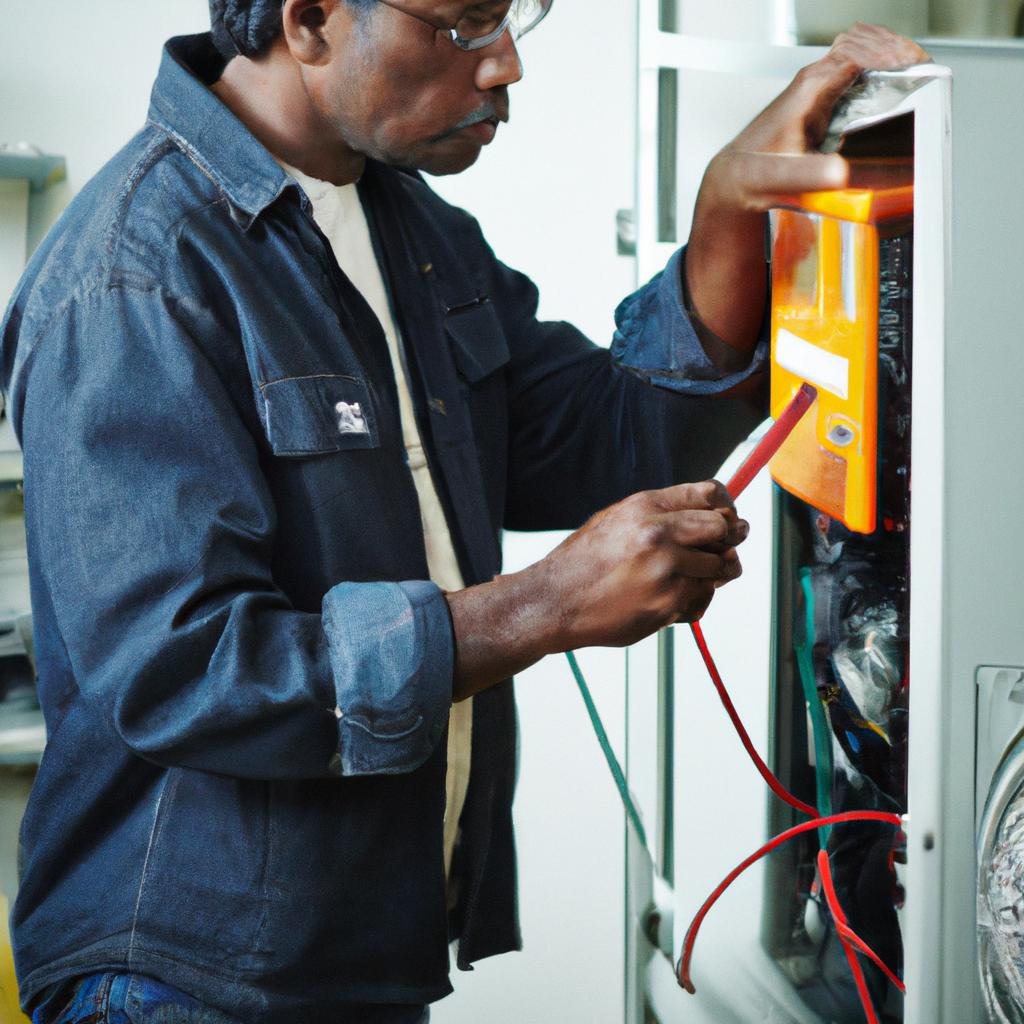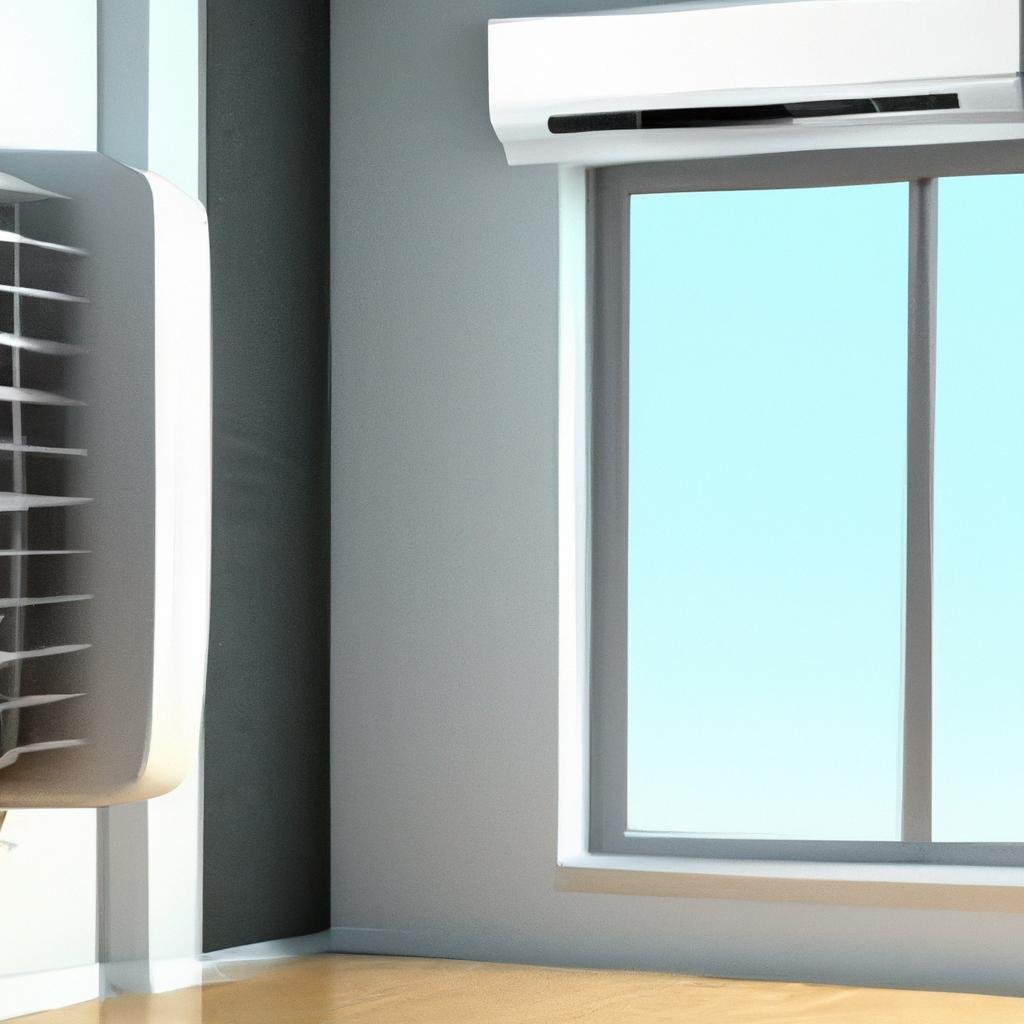Welcome to the land of home comfort, where warmth and coolness coexist harmoniously with efficiency. If you are a proud owner of a mini split or are just considering purchasing one, this article is for you. Today, we’ll embark on an enlightening journey, journey to the heart of the mini split — its settings. We will navigate the terrain of understanding to discover the secret to the most efficient settings for this modern marvel. With a dash of persistence and a pinch of curiosity, you’ll become a master of mini split optimization in no time. So, put on your explorer hat, and get ready to dive into the thrilling world of mini split efficiency. There’s no turning back now!
Unraveling the Efficiency of Mini Split Settings
When it comes to maximizing your mini split’s efficiency, there are several factors to consider. Above everything else, it’s crucial that the machine’s settings are optimized to suit your specific needs and environment. Understanding the implications of these settings can pave the way for both improved comfort and significant energy savings.
Temperature Set Point
The temperature you set on your mini split plays a significant role in its efficiency. Consider setting the temperature a degree or two higher during summer and a degree or two lower during winter. Such a minimal shift can have a surprising effect on your energy bill while maintaining comfort. Every degree of extra cooling or heating can increase energy consumption by 5 to 10%.
Fan Speed
The fan speed on your mini split can impact its efficiency too. Higher fan speeds circulate more air and can make the space feel chilly during cooling seasons. On the contrary, setting it on slower speed during heat and high speed during cold can save energy. It helps maintain the temperature and reduces the need for the system to turn on and off frequently.
Just remember, the “most efficient” setting may vary from home to home depending on personal preferences and the specific climate of the region. It’s all about finding a balance between comfort and efficiency.
| Setting | Efficiency |
|---|---|
| Temperature Set Point | Decreasing by 1-2 degrees can increase efficiency by 5 to 10% |
| Fan Speed | Lower speeds during hot weather and higher speeds during cold weather can reduce energy consumption and maintain comfort |
Don’t hesitate to experiment with different settings until you find what works best for your space. After all, comfort is the ultimate goal.
Harnessing Optimal Temperature Control for Your Comfort
When it comes to efficient temperature control, mastering your mini split setup is key. The ideal setting depends primarily on your comfort level and the climate in which you reside. However, the general recommendation is to set the temperature between 68 to 72 degrees Fahrenheit during winter and 73 to 79 degrees Fahrenheit during summer. Remember, the goal here is to maintain not just comfort but also energy efficiency.
Next, let’s explore a few tactics to enhance that efficiency. The first is a no-brainer – appropriate installation. Make sure your mini split is correctly installed and in an optimal location for airflow distribution. If it’s too high or too low, tucked away in a corner, you might be running into unnecessary energy consumption. Then, we have the programmability of your mini split. Utilize the timing features to align with your routine, allowing the unit to be off when you are not at home, thus saving energy. Another underrated tactic is cleaning and maintenance. Ensure your unit’s filters are replaced and cleaned regularly for optimal performance.
| Tactic | Why It’s Important |
|---|---|
| Appropriate Installation | An incorrectly installed unit can consume unnecessary energy. |
| Programmability | Alignment with your routine can save energy when you’re not at home. |
| Cleaning and Maintenance | Clean filters ensure optimal unit performance. |
Now, armed with these tactics, you are all set to harness the power of optimal temperature control, ensuring not just your comfort, but energy efficiency too.

Mastering Mini Split Operation for Peak Efficiency
Optimal efficiency in ductless mini split operation hinges largely on appropriate user settings. In most instances, maintaining your mini split at 68-72 degrees Fahrenheit (20-22 degrees Celsius) for cooling and 60-66 degrees Fahrenheit (16-19 degrees Celsius) for heating is the most energy-efficient choice. Given that these settings provide adequate comfort for the vast majority of individuals, they are generally recommended as a starting point. However, personal comfort levels as well as environmental factors should also be considered when adjusting your mini split system.
The use-specific modes of mini splits offer another route to optimisation. Most models boast modes like Sleep Mode, Eco Mode, and Auto Mode. Sleep Mode adjusts the temperature and fan speed to create a conducive environment for sleep, ramping down the cooling or heating overnight to conserve energy. Eco Mode, on the other hand, optimises the system to prioritise energy conservation, balancing comfort with minimal energy use. The Auto Mode diligently adjusts according to temporal and environmental changes, ensuring optimal efficiency through varying conditions. Utilising these modes, coupled with regular system maintenance, can greatly enhance the energy efficiency of your mini split system.
Energy-Saving Tips for Your Mini Split System
Using a mini split system can be a boon for your energy needs and bills, but only if you optimize their settings for efficiency. One of the most efficient setting for your mini split system is to set the temperature at a comfortable yet energy-saving level. Depending on the weather, this can be anywhere between 68°F(20°C) and 78°F (25.5°C). Moreover, don’t forget to take advantage of your system’s programmable thermostat. Schedule your system to operate less when the area is unoccupied and more when you are around, this will help in greater energy savings. Lastly, making use of the sleep mode at night can also keep your system running efficiently.
| Features | Benefits |
|---|---|
| Comfortable temperature setting | Conserves energy and maintains an optimal environment |
| Programmable Thermostat | Efficient energy utilization introducing better energy-saving modes |
| Sleep Mode | Reduces power consumption during inactive hours ensuring cost savings |
Maintenance is another vital factor in efficiency. Regularly change or clean the filters in your system. A filter choked with debris restricts airflow and forces the system to work harder while compromising air quality. It’s also recommended that you professionally service your mini split system at least once a year. Professionals can identify and address small issues before they become major problems, helping your system work to its full potential.
- Regularly changing or cleaning filters ensures efficient operation
- Annual professional service keeps your system in peak working condition
Q&A
Q: What exactly is a mini split?
A: A mini split, or ductless mini split, is a type of heating and cooling system that doesn’t require the use of ducts. It consists of an indoor unit, which blows the warmed or cooled air into the room, and an outdoor unit, which houses the compressor and condenser.
Q: Why has the mini split become so popular recently?
A: Mini splits have seen a surge in popularity due to their energy efficiency, flexibility, and straightforward installation process. They can heat or cool selected areas of your home, enabling you to reduce energy waste by not heating or cooling unused rooms — a factor that can lead to significant savings on energy bills.
Q: So, speaking of efficiency, what is the most efficient setting for a mini split?
A: While settings might vary depending on the specific model, a general rule of thumb is to set temperatures at around 68°F during winter months and about 78°F during summer months. This prevents the unit from working too hard and helps to conserve energy.
Q: Wouldn’t those recommended temperatures be uncomfortable for some people?
A: Surprisingly, most people find these temperatures quite comfortable. However, personal preference does indeed play a role. Mini split systems come with adjustable settings, enabling you to find a temperature range that works best for you while remaining energy efficient.
Q: If I tweak my mini split’s temperature, will it still be cost and energy efficient?
A: Yes, small tweaks won’t have a significant impact on its efficiency. The key is to avoid extreme temperature settings during very hot or cold weather. Letting your system gradually adjust the temperature is more energy-efficient than demanding immediate coolness or warmth.
Q: How else can I ensure my mini split is working as efficiently as possible?
A: Regular maintenance is crucial for keeping your mini split in top shape. Cleaning filters and servicing the system annually contributes to its efficiency and longevity. Plus, making your home more energy-efficient, like sealing drafts and using energy-saving light bulbs, can also optimize your mini split’s operation.
Q: Can a well-maintained mini split work efficiently all year round?
A: Absolutely! Mini splits are perfect for both hot summers and cold winters. By setting it efficiently and maintaining it well, you’ll be able to enjoy a comfortable home atmosphere all year round, while saving on your energy bills.
Key Takeaways
As we wrap up our air-bound journey with mini-splits, remember this: efficiency is key! Don’t be daunted by the many settings and controls, they’re ultimately your hidden treasure map to comfort and cost-savings. So next time you’re cranking up your mini-split, imagine it as your personal energy wizard working hard to chill out, wick away humidity, or cozy up your living space depending on your desires. The most efficient setting is that magical sweet spot where comfort meets cost-effectiveness. But don’t forget, your experiences, location, and the model specifics also play significant roles in defining ‘the most efficient’ for you. Stay cool, my friends— or warm, or dehumidified, whatever floats your boat. Your mini-split is here to make it happen!

